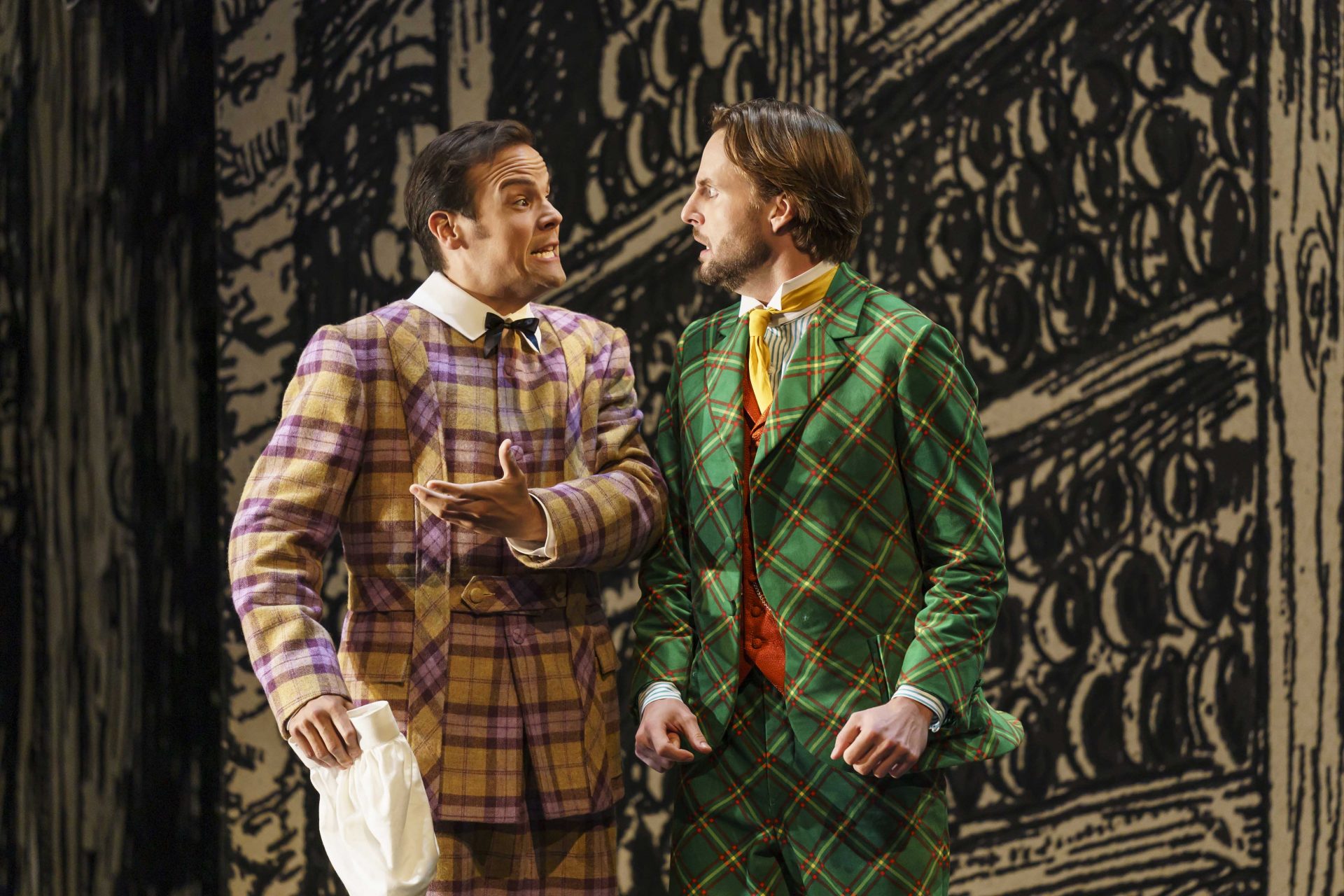
Die Zauberflöte
We take a look at Barbe & Doucet's production of Die Zauberflöte. Subscribers can watch now on Glyndebourne Encore.
February’s Opera of the Month on Glyndebourne Encore is Barbe & Doucet’s production of Mozart’s Die Zauberflöte.
Over on Glyndebourne Encore, subscribers can watch Die Zauberflöte in full, and enjoy an exclusive introduction from opera specialist Alexandra Coghlan who talks to directing duo Barbe & Doucet about their production of Mozart’s most magical comedy. She also meets the creative minds who brought the set to life.
A brief introduction
Premiered just months before Mozart’s death, Die Zauberflöte (The Magic Flute) represents a new departure for the composer. Catching the spirit of revolution in the air, Mozart turned his attention for the first time from court opera to popular opera, writing this singspiel (‘sung-play’) for a new and much broader audience.
When Prince Tamino sees the beautiful Pamina he falls instantly in love. But she has been kidnapped by Sarastro, so with the help of bird-catcher Papageno he sets out on a quest to find her. Searching for love, Tamino finds much more than he bargained for. Faced with a decision he must choose between darkness and light, order and chaos, duty and desire. Which will it be?
Die Zauberflöte is one of the composer’s most enchanting works, a fairytale that uses familiar archetypes to ask provocative and difficult questions about religion, the nature of power, the bonds of family, and of course love.

Why not to miss this production
This production by Barbe & Doucet takes a fresh and playful look at the troublesome gender politics of Mozart’s late opera. It’s a work whose surface charm – it’s delightful melodies, lively comedy and colourful cast of characters – conceals a complex and ambiguous piece, one that asks more questions than it answers, particularly in the current political climate.
This production sets the action in a turn-of-the-century Viennese hotel, with the magical elements of the story brought to life with puppetry. In this video, Katie Derham goes behind the scenes of The Magic Flute and talks to puppeteer Mikey Brett to discover how some of the opera’s magical moments were created.
The beauty of Mozart’s operatic allegory is its adaptability. Whether you want an innocent comedy or something rather more sophisticated, it’s all here in this endlessly perplexing and fascinating work.
A great moment to look out for: ‘Der Holle Rache’
If you’re looking for the high point of Die Zauberflöte it doesn’t get much higher than the Queen of the Night’s Act II aria ‘Der Holle Rache’. Originally composed as a showpiece for Mozart’s sister-in-law Josepha Hofer, the aria has been a favourite among coloratura sopranos ever since – a dazzling piece of musical magic and technical bravura that takes its singer right up to the very top of her range.
Thwarted by Sarastro, the Queen of the Night orders her daughter Pamina to kill her enemy. Filled with rage, she explodes into this exhilarating aria that is part threat and part incantation.
Although the melody is a memorable one – full of chromatic drama, unexpected rhythmic emphasis and athletic vocal leaps – it’s the pitch that really sets this piece apart. The repeated top Cs (which sound almost like a series of musical stabs, remember the Queen of the Night has just given Pamina a knife) are infamous, but the aria actually extends even higher, featuring several high Fs as well – one of the highest notes to appear in a mainstream classical score. This is the music of a woman on the brink, an aria of extremity, desperation, maybe even madness.
Cast and creative team
Celebrated Canadian directing duo Barbe & Doucet made both their British and Glyndebourne debuts here with their production of Die Zauberflöte. The production was conducted by Ryan Wigglesworth with the Orchestra of the Age of Enlightenment.
Russian soprano Sofia Fomina takes on the role of Pamina, with tenor David Portillo as her beloved Tamino. Glyndebourne regular Brindley Sherratt stars as Sarastro, with the ebullient Björn Bürger as Papageno. Norwegian soprano Caroline Wettergreen is the Queen of the Night.














